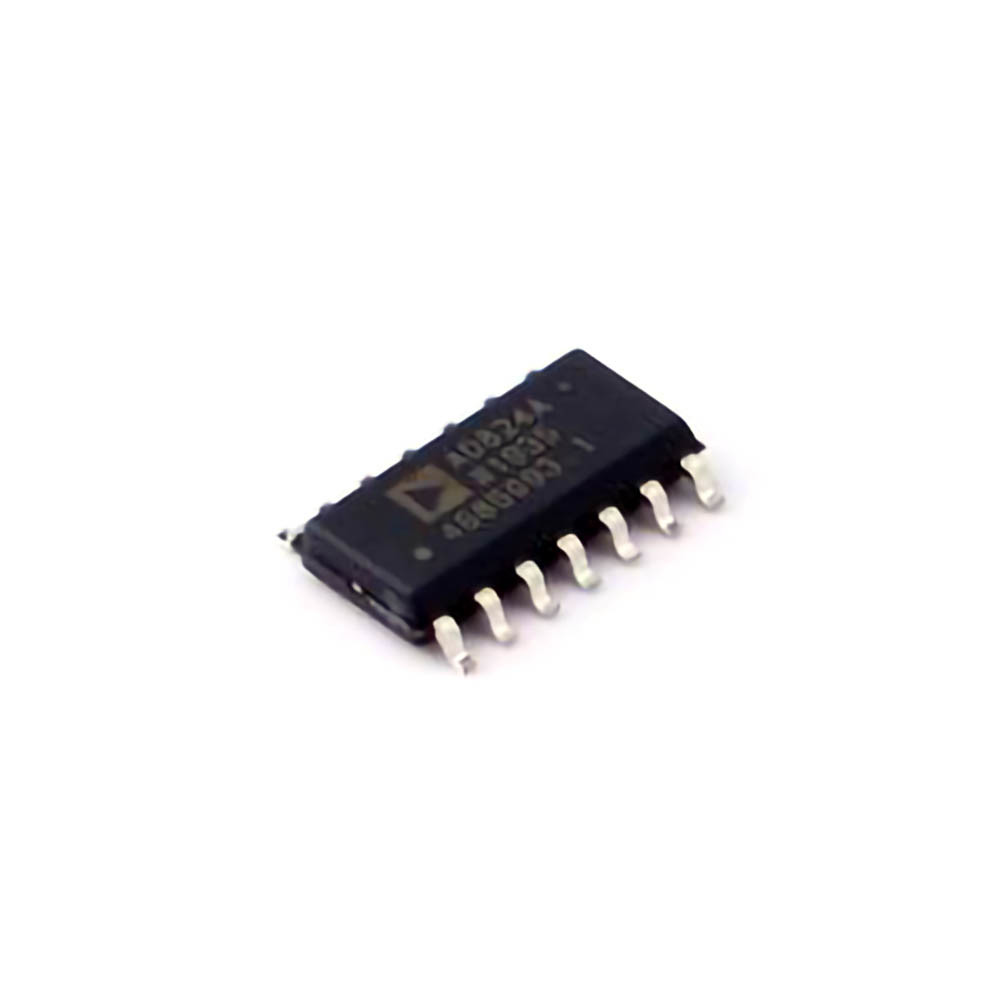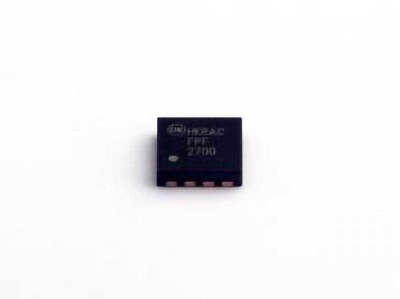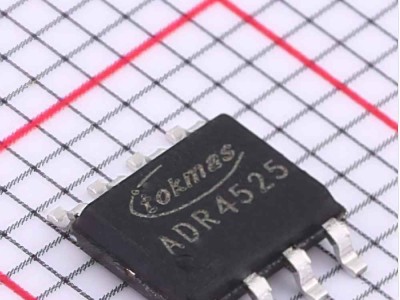
Identifying and Addressing Common Issues in the AD824ARZ-14 Op-Amp
The AD824ARZ-14 is a highly regarded operational amplifier designed for low noise, high precision, and robust performance in a variety of analog applications. However, like any electronic component, it can face issues under specific conditions or when integrated into circuits without the proper precautions. Troubleshooting such problems can be challenging, but understanding the root causes and knowing how to address them can help restore the op-amp’s optimal functionality.
1. Power Supply Instability or Insufficient Voltage
One of the most common issues encountered with the AD824ARZ-14 is power supply instability. The op-amp is designed to operate with a wide voltage range (±5V to ±15V), but even minor fluctuations or inadequate power can cause erratic behavior. For example, if the supply voltage is too low or uneven, the op-amp may not function correctly, leading to output distortions, gain fluctuations, or a complete failure to respond to input signals.
Solution:
Verify the Power Supply: Ensure the voltage levels fall within the recommended operating range of the AD824ARZ-14. A stable, well-regulated power supply is critical. Check for any ripple or noise in the DC supply, as this can affect the op-amp’s performance.
Add Decoupling Capacitors : Place bypass capacitor s (typically 0.1µF and 10µF) close to the op-amp’s power supply pins. These help filter high-frequency noise and provide stability to the voltage rails.
2. Output Saturation or Clipping
When the AD824ARZ-14 is driven into saturation or clipping, the output signal may appear to be cut off at the positive or negative supply rails, distorting the waveform. This could be due to an excessively high input signal, improper feedback network configuration, or mismatched impedance.
Solution:
Check Input Signal Levels: Ensure the input signal is within the linear operating range of the op-amp. If the input signal is too large, it can drive the output into saturation. Adjust the signal amplitude accordingly.
Review Feedback Network: The feedback network determines the op-amp’s gain and linear response. Incorrect resistor values or poor feedback connections can lead to unexpected behavior. Verify that the feedback loop is correctly implemented.
Match Impedances: If the load impedance is too low, or if there is a mismatch between the source and the load, the op-amp may be forced into saturation. Ensure that the input and output impedances are appropriately matched.
3. Oscillations and Stability Problems
The AD824ARZ-14 is a high-precision op-amp, but like all op-amps, it can be prone to oscillations if the circuit design is not optimal. These oscillations are usually due to improper compensation, long feedback paths, or poor layout design. Oscillations manifest as high-frequency noise or undesired waveforms at the output.
Solution:
Check Compensation: Some op-amps require additional compensation to maintain stability in certain configurations, especially with high gain or capacitive loads. Verify that compensation capacitors are correctly placed if the datasheet recommends them.
Shorten Feedback Paths: Long feedback traces can introduce parasitic inductance and capacitance that destabilize the op-amp. Keep the feedback loop short and direct to minimize these effects.
Review PCB Layout: Pay attention to grounding and layout to reduce noise and instability. A poor ground plane or noisy traces near the op-amp can induce oscillations.
4. Input Bias Current and Offset Voltage Issues
The AD824ARZ-14, like all op-amps, exhibits a small input bias current, which can lead to input offset voltage. While this is typically negligible, in some precision applications, this can manifest as unwanted errors. For example, if the input bias current flows through external Resistors in the circuit, it can create an offset voltage, leading to inaccurate outputs.
Solution:
Use Offset Adjustments: The AD824ARZ-14 provides an offset nulling pin that allows users to fine-tune the input offset voltage. Use this feature to minimize offset and achieve precise performance.
Choose Low-Bias Resistors: When designing the input circuitry, select resistors with low thermal noise and bias current sensitivity to minimize the effects of input bias currents.
5. Incorrect Gain Configuration
Improper resistor selection or feedback network design can lead to incorrect gain, impacting the overall performance of the circuit. If the gain is too high or too low, the op-amp may either saturate or fail to amplify the signal adequately.
Solution:
Recalculate Gain: Revisit the resistor values used in the feedback loop to ensure the desired gain is achieved. Double-check the feedback configuration for errors or mismatches.
Use Precision Resistors: Since the AD824ARZ-14 is a precision op-amp, use resistors with tight tolerances to avoid significant gain errors.
Advanced Troubleshooting Techniques for the AD824ARZ-14
While basic troubleshooting covers many common issues, some more advanced problems may arise when using the AD824ARZ-14 in complex or high-performance applications. Here, we explore some additional techniques and solutions that can help resolve these more intricate problems.
6. Input Overload and Protection
The AD824ARZ-14 features robust input protection against overdrive, but in some circuits, input signals can exceed the op-amp’s maximum input voltage range. This can lead to permanent damage to the internal transistor s, which may be difficult to detect immediately.
Solution:
Use Clamping Diodes : To protect the input, use external clamping diodes that prevent the voltage from exceeding the op-amp’s input voltage limits. These diodes help protect the input stages from high voltage spikes.
Limit the Input Range: Ensure that the input voltage remains within the specified range by using resistors or series inductors to limit the amplitude of incoming signals.
7. Thermal Runaway and Overheating
Excessive power dissipation can lead to thermal runaway, where the op-amp's internal temperature rises uncontrollably. This can cause the op-amp to malfunction or even be permanently damaged.
Solution:
Monitor Operating Temperature: Use a temperature sensor or thermal imaging to monitor the op-amp’s temperature during operation. Ensure it remains within the safe operating range as specified in the datasheet.
Add Heatsinks or Improve Ventilation: If your design operates in a high-power environment, consider adding heatsinks to the op-amp or improving the airflow around the circuit to dissipate heat more effectively.
8. Crosstalk and Interference from Adjacent Components
In dense analog circuits, electromagnetic interference ( EMI ) or crosstalk between adjacent components can degrade the performance of the AD824ARZ-14. This problem is particularly pronounced in high-gain or high-frequency circuits.
Solution:
Shielding and Grounding: Use proper shielding techniques to protect the op-amp from external EMI. A well-designed ground plane and proper PCB routing can also help reduce interference from nearby traces.
Decouple Critical Signals: Use decoupling capacitors to filter noise from the power supply and signal lines. Additionally, shield sensitive signal paths from external sources of interference.
9. Parasitic Effects and PCB Layout
The performance of the AD824ARZ-14 can be significantly impacted by parasitic inductance and capacitance introduced by poor PCB layout design. These parasitics can lead to unwanted oscillations, high-frequency noise, or reduced signal fidelity.
Solution:
Improve PCB Design: Use a multi-layer PCB with a solid ground plane to minimize parasitic effects. Route high-speed traces away from sensitive analog signals, and use short, direct connections for feedback loops to minimize inductance.
Control Capacitive Coupling: Minimize the use of long traces near high-speed signals, as this can result in unwanted capacitive coupling that affects the op-amp’s behavior. Use differential routing techniques for sensitive signals.
10. Noise and Signal Integrity Issues
The AD824ARZ-14 is designed for low-noise applications, but improper layout, power supply issues, or external interference can introduce noise into the system, degrading signal integrity.
Solution:
Use Low-Noise Power Supplies: A clean, low-noise power supply is crucial for maintaining the performance of precision op-amps. Use linear regulators or low-noise switching regulators to reduce noise from the power source.
Implement Differential Signaling: If your application involves weak signals or very high gains, consider using differential signaling to improve noise immunity.
Conclusion
Troubleshooting the AD824ARZ-14 op-amp involves careful analysis of potential issues, from power supply instability to advanced problems like thermal runaway and parasitic effects. By understanding the common issues and applying the recommended solutions, you can enhance the performance of this precision amplifier and ensure it operates optimally in your application. With careful design and systematic troubleshooting, you can avoid common pitfalls and achieve reliable, high-quality analog performance.
If you are looking for more information on commonly used Electronic Components Models or about Electronic Components Product Catalog datasheets, compile all purchasing and CAD information into one place.


